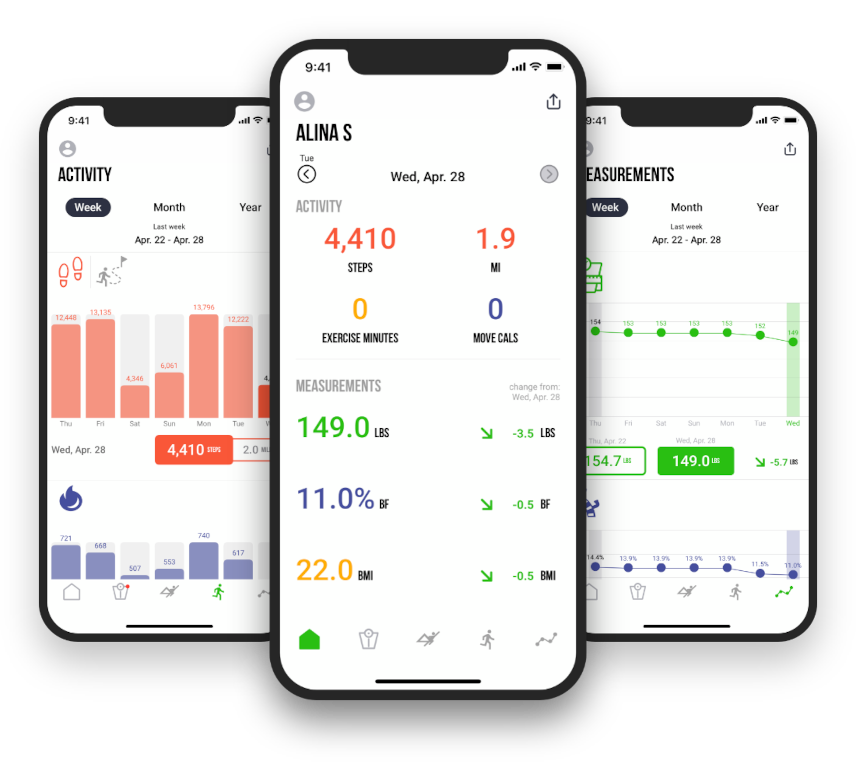Recognising Eating Disorders in Clients and How You Can Help
That client who never eats before training. The one obsessing over every calorie. The perfectionist who panics about missing workouts.
Red flags you can’t ignore. Eating disorders hide in plain sight at gyms and fitness studios.
Here’s how to recognize the signs and respond appropriately.
The Hidden Epidemic
Prevalence Reality
1 in 20 people will experience an eating disorder. Higher rates in fitness environments.
Gender Myths
Not just young women. Men, older adults, and athletes all affected.
Fitness Connection
Exercise addiction often accompanies eating disorders. Gym becomes dangerous place.
Professional Responsibility
You’re not a therapist, but you’re often the first to notice warning signs.
Common Eating Disorders
Anorexia Nervosa
Severe food restriction and weight loss. Distorted body image and fear of weight gain.
Bulimia Nervosa
Binge eating followed by compensatory behaviors. Vomiting, laxatives, or excessive exercise.
Binge Eating Disorder
Frequent episodes of uncontrolled eating without compensation. Often leads to weight gain.
ARFID
Avoidant/Restrictive Food Intake Disorder. Limited food variety or quantity without body image issues.
Exercise Anorexia
Using excessive exercise to compensate for food intake. Often overlooked in fitness settings.
Our personal trainers across Melbourne receive training to recognize these warning signs and respond appropriately.
Physical Warning Signs
Rapid Weight Changes
Dramatic weight loss or fluctuations without medical explanation.
Exercise Obsession
Training through injury, illness, or exhaustion. Panic when missing sessions.
Fatigue and Weakness
Lack of energy despite regular training. Poor recovery between sessions.
Frequent Injuries
Stress fractures, muscle strains, and slow healing. Undernourishment affects recovery.
Temperature Sensitivity
Always cold, wearing layers in warm weather. Body struggling to regulate temperature.
Behavioral Red Flags
Food Rituals
Cutting food into tiny pieces, eating very slowly, or avoiding eating around others.
Calorie Obsession
Tracking every calorie consumed and burned. Anxiety about food choices.
Social Withdrawal
Avoiding social events involving food. Isolating from friends and family.
Perfectionism
All-or-nothing thinking about diet and exercise. Extreme self-criticism.
Mood Changes
Irritability, anxiety, or depression, especially around food and exercise.
The Prahran Professional Pressure
High-achieving professionals often develop eating disorders as control mechanisms.
Stress, perfectionism, and image pressure create perfect storm for disordered eating.
Psychological Indicators
Body Dysmorphia
Seeing themselves as larger than they are. Constant body checking or avoidance.
Control Issues
Using food and exercise as ways to control emotions and life circumstances.
Low Self-Worth
Tying self-value to weight, appearance, or exercise performance.
Anxiety Around Food
Panic about eating certain foods or eating in public. Rigid food rules.
What NOT to Do
Don’t Diagnose
You’re not qualified to diagnose eating disorders. Avoid labeling or assumptions.
Don’t Comment on Appearance
“You look thin” or “You’ve lost weight” can reinforce disordered behaviors.
Don’t Ignore Warning Signs
Hoping it will resolve itself rarely works. Early intervention is crucial.
Don’t Enable Behaviors
Avoid praising extreme dedication or supporting unhealthy goals.
How to Help
Express Concern Gently
“I’ve noticed you seem tired lately. How are you feeling?” Non-judgmental approach.
Listen Without Judgment
Provide safe space for them to share struggles. Don’t try to fix everything.
Encourage Professional Help
Suggest speaking with doctor, therapist, or eating disorder specialist.
Set Boundaries
You can’t be their therapist. Know your scope of practice and limitations.
The Port Melbourne Support Network
Strong community connections help recovery. Encourage social support and professional help.
Waterfront environment provides calming space for difficult conversations.
Professional Resources
Eating Disorder Specialists
Psychologists and psychiatrists trained in eating disorder treatment.
Dietitians
Registered dietitians who specialize in eating disorder recovery.
Support Groups
Peer support groups for individuals and families affected by eating disorders.
Medical Professionals
Doctors who understand the medical complications of eating disorders.
Creating Safe Environments
Inclusive Language
Avoid diet talk, body shaming, or appearance-focused comments.
Health-Focused Goals
Emphasize strength, energy, and performance over weight or appearance.
Flexible Programming
Allow rest days and modifications. Avoid rigid exercise prescriptions.
Education Emphasis
Teach about nutrition for performance and health, not restriction.
The Williamstown Family Approach
Eating disorders affect entire families. Provide resources for family members and support systems.
Model healthy relationships with food and exercise for younger clients.
Mobile Personal Training Considerations
Home environment may reveal more about eating behaviors. Observe kitchen, food availability, and family dynamics.
Private setting allows for more open conversations about concerns.
Recovery Support
Patience Required
Recovery is long process with setbacks. Maintain supportive relationship throughout.
Team Approach
Work with treatment team. Follow their guidelines for exercise and nutrition.
Progress Redefinition
Celebrate non-scale victories. Energy, mood, and strength improvements.
Relapse Awareness
Understand that setbacks are normal. Don’t take them personally.
Legal and Ethical Considerations
Scope of Practice
Stay within your qualifications. Refer to appropriate professionals.
Confidentiality
Respect client privacy while encouraging professional help.
Documentation
Keep records of concerns and referrals made. Protect yourself legally.
Continuing Education
Learn about eating disorders through workshops and courses.
Warning Signs in Athletes
Performance Decline
Decreased strength, endurance, or skill despite training.
Injury Frequency
Stress fractures and overuse injuries from inadequate nutrition.
Mood Changes
Irritability, anxiety, or depression affecting training and competition.
Social Isolation
Withdrawing from teammates and social activities.
Your Action Plan
- Educate yourself about eating disorder signs and symptoms
- Create safe, inclusive training environments
- Build relationships that encourage open communication
- Know local resources for eating disorder treatment
- Practice expressing concern in non-judgmental ways
- Establish boundaries around your role and expertise
- Seek supervision or consultation when concerned
The Recovery Reality
Eating disorders are serious mental health conditions requiring professional treatment.
Your role is support and referral, not treatment. But your awareness can save lives.
Getting Started
Want to learn more about supporting clients with eating disorders? Book a consultation to discuss creating safer, more inclusive fitness environments.
Your awareness and compassion can make the difference.
Looking for trainers who understand the complexity of health and fitness? Our team is trained to recognize warning signs and provide appropriate support and referrals.

